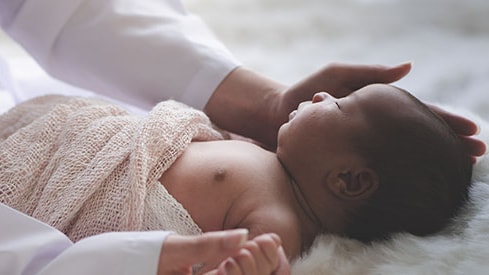Key points
- Group B Streptococcus (group B strep, GBS) disease can include many different types of infections.
- Symptoms depend on the part of the body that is infected.
- Symptoms of GBS disease are different in newborns compared to people of other ages who get GBS disease.

Symptoms
Newborns
Most newborns who get GBS disease in the first week of life have symptoms on the day of birth. Babies who develop disease later can appear healthy at birth and during their first week of life.
GBS disease symptoms can seem like other health problems in newborns and babies. Symptoms include:
- Fever
- Difficulty feeding
- Irritability or lethargy (limpness or baby is hard to wake up)
- Difficulty breathing
- Blue-ish color to skin
Pregnant women who test positive
About 1 in 4 women test positive for GBS bacteria during routine screening towards the end of their pregnancy.
No symptoms: These women usually don't feel sick or have any symptoms.
Others
Symptoms depend on the part of the body that's infected. Listed below are symptoms associated with the most common infections caused by GBS bacteria in adults.
Symptoms of bacteremia (bloodstream infection) and sepsis (the body's extreme response to an infection) include:
- Fever
- Chills
- Low alertness
Symptoms of pneumonia (lung infection) include:
- Fever
- Chills
- Cough
- Rapid breathing or difficulty breathing
- Chest pain
Skin and soft tissue infections often appear as a bump or infected area on the skin that may be:
- Red
- Swollen
- Warm to the touch
- Full of pus or other drainage
People with skin infections may also have a fever.
Bone and joint infections often appear as pain in the infected area and might also include:
- Fever
- Chills
- Swelling
- Stiffness or inability to use the affected limb or joint
Complications
Babies
Babies may have long-term problems, such as deafness and developmental disabilities, due to having GBS disease. Babies who had meningitis are especially at risk for having long-term problems.
Even with good care, babies can still die
Adults
Serious GBS infections, such as bacteremia, sepsis, and pneumonia, can also be deadly for adults. On average, about 1 in 20 non-pregnant adults with serious GBS infections dies. Risk of death is lower among younger adults and adults who do not have other medical conditions.
